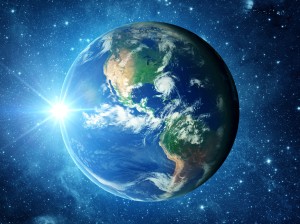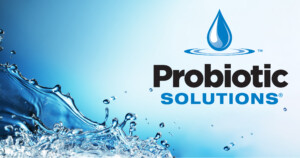
By Jael Batty
Caffeine isn’t just prevalent in our food––it’s prevalent in our wastewater, waterways, and treated water.
On February 8th, Google celebrated the 225th birthday of Friedlieb Ferdinand Runge, the scientist who accidentally discovered caffeine. Runge was asked by a friend to analyze the chemical makeup of coffee beans. In doing so, he discovered the compound now called caffeine.1
Caffeine Is Found in a Range of Foods
Caffeine is a natural stimulant found in coffee, cocoa, and tea.2Besides soft drinks, it can also be found in a range of coffee- or chocolate-flavored foods, including and breakfast cereals, puddings, yogurts, and ice creams. It is used in medications as a diuretic and to improve effectiveness.3
Caffeine Is Flushed into the Wastewater System
Caffeine is also showing up in our water supplies. This is because the human body doesn’t metabolize or absorb all the caffeine ingested. Caffeine is excreted by the body and flushed into our wastewater. Wastewater, in turn, is treated and recycled back into the environment, or––in some cases––directly back into drinking water.4
Additional sources of caffeine in the wastewater include running coffee grounds through garbage disposals4and dumping caffeinated drinks into the sewage system. U.S. wastewater treatment plants (WWTPs) have 60% to 70% efficiency rate for removing caffeine. Swiss plants have a higher rate of elimination ––81% to 99%. Nevertheless, concentrations of caffeine are ever-present in Swiss lakes and rivers.5
Caffeinated Water Is World-Wide
Studies of caffeine concentrations in waterways correlate with precipitation data, suggesting that caffeine is washed into the environment when WWTPs and septic systems are overloaded.5,6 America and Switzerland aren’t the only countries affected by caffeine in our waterways. It has been found all over the world.6,7,8 Nor is it only contaminating our lakes, rivers, and drinking water. It has also been found in our oceans.9
Caffeinated Water Is not Naturally-Occurring
Concentrations of caffeine in our natural waterways are miniscule. It should be noted, however, that caffeine does not naturally occur in waterways and the environmental impact is unclear.4
Citations:
1. G Steer (2019). Google doodle celebrates the chemist who accidentally ‘discovered’ caffeine, Time Magazine, https://time.com/5525013/google-doodle-friedlieb-ferdinand-runge/
2. Sources of caffeine,The Institute for Scientific Information on Coffee, https://www.coffeeandhealth.org/topic-overview/sources-of-caffeine/
3. Besides coffee, these other foods, beverages, and medications may also cause you to stay awake, The National Sleep Foundation, https://www.sleep.org/articles/foods-with-caffeine/
4. Caffeine is in our water supply, CafeineInformer, https://www.caffeineinformer.com/caffeine-in-water-supply
5. I Buerge, T Poiger, M Müeller, H Buser (2003). Caffeine, an anthropogenic marker for wastewater contamination of surface waters, Environmental Science & Technology, https://pubs.acs.org/doi/10.1021/es020125z
6. P Spense (2015). Using caffeine as a water quality indicator in the ambient monitoring program for third fork creek watershed, Durham, North Carolina, Environ Health Insights, https://www.ncbi.nlm.nih.gov/pmc/articles/PMC4482327/
7. S Weigel, U Berger, E Jensen, R Kallenborn, H Thoresen, H Hühnerfuss (2004) Determination of selected pharmaceuticals and caffeine in sewage and seawater from Tromsø/Norway with emphasis on ibuprofen and its metabolites, Chemosphere, https://www.ncbi.nlm.nih.gov/pubmed/15212901
8. L Eisenstadt, Drugs in the water, Triplepoint, https://www.bu.edu/sjmag/scimag2005/features/drugsinwater.htm
9. M Liebert (2013). Caffeine as a contaminant of freshwater and marine systems: an interview with Elise Granek,PhD, Journal of Caffeine Research, https://www.liebertpub.com/doi/abs/10.1089/jcr.2012.1221?journalCode=jcr
Related Posts

The Water Break Podcast Hits 4,000 Downloads
This week, our Water Break Podcast reached the milestone of 4,000 downloads. Our fanbase is growing quickly, as it took us 18 episodes and 16 months to reach 3,000 downloads but then only 3 more episodes to reach the 4,000-download mark. The statistics report from Blubrry, our podcast hosting service, has also let us know

Earth Day: “It’s Getting Better All the Time”
Celebrating Earth Day every April 22 is a great time to pause and reflect: How are we, today, treating the environment and the plants, animals, and people who live in it? What have we accomplished in the past year that makes our planet a better, more sustainable place to live and raise our families? What are our goals for future improvement?

Water Master Plans
By Heather Jennings, PE When I worked with engineering firms, there were a lot of water master plans being developed. Many of them were updates, as the plans had been around for 5–10 years and needed revision. Some master plans evaluated water and wastewater systems from scratch. All of these were interesting to me due

